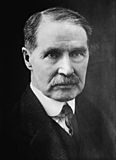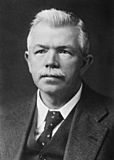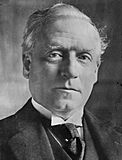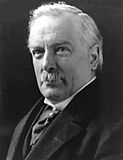1922 United Kingdom general election facts for kids
|
|||||||||||||||||||||||||||||||||||||||||||||||||||||||||||||||||||||||
|
|
|||||||||||||||||||||||||||||||||||||||||||||||||||||||||||||||||||||||
|
All 615 seats in the House of Commons 308 seats needed for a majority |
|||||||||||||||||||||||||||||||||||||||||||||||||||||||||||||||||||||||
|---|---|---|---|---|---|---|---|---|---|---|---|---|---|---|---|---|---|---|---|---|---|---|---|---|---|---|---|---|---|---|---|---|---|---|---|---|---|---|---|---|---|---|---|---|---|---|---|---|---|---|---|---|---|---|---|---|---|---|---|---|---|---|---|---|---|---|---|---|---|---|---|
| Turnout | 73.0%, |
||||||||||||||||||||||||||||||||||||||||||||||||||||||||||||||||||||||
|
|||||||||||||||||||||||||||||||||||||||||||||||||||||||||||||||||||||||
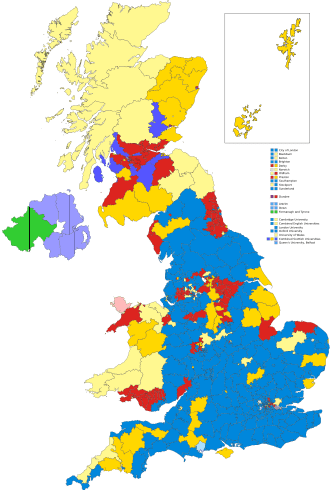
Colours denote the winning party—as shown in 1922 United Kingdom general election § Notes
|
|||||||||||||||||||||||||||||||||||||||||||||||||||||||||||||||||||||||
|
|||||||||||||||||||||||||||||||||||||||||||||||||||||||||||||||||||||||
The 1922 United Kingdom general election was a big vote held on November 15, 1922. In this election, people across the United Kingdom chose who would represent them in the House of Commons. The Conservative Party, led by Andrew Bonar Law, won with a clear majority. This meant they had more than half of all the seats.
This election was a major turning point in British politics. The Liberal Party, which used to be one of the two main parties, became much smaller. The Labour Party grew a lot and became the main rival to the Conservatives. After this election, the Conservative Party was the biggest party in Parliament for most of the next 42 years.
It was also the first election that did not include Southern Ireland. This was because Southern Ireland was becoming a new country called the Irish Free State. This change meant there were about 100 fewer seats in the House of Commons compared to the previous election.
Contents
What Happened Before the Election?
Before this election, the Liberal Party was split into two groups. One group was led by H. H. Asquith, and the other by David Lloyd George. From 1916 to 1922, the Conservatives worked together with Lloyd George's Liberal group in a special partnership called a "coalition government."
However, in October 1922, this partnership ended. Lloyd George stepped down as Prime Minister. Bonar Law then formed a new government made up only of Conservatives. This set the stage for the 1922 election.
Key Political Figures and Their Roles
Even though Asquith was still the leader of the main Liberal Party, he wasn't as important in the national discussions. Most of the attention was on Bonar Law and David Lloyd George.
Some important Conservatives, like Arthur Balfour and Austen Chamberlain, were not part of Bonar Law's new government. They hoped to have a lot of power after the election. But Bonar Law's party won enough seats to govern on its own.
This election was also special for the Labour Party. For the first time, they won more votes and seats than both Liberal groups combined. A future Prime Minister, Clement Attlee, was elected as a Member of Parliament (MP) for the first time in this election.
The Divided Liberal Party
The two Liberal groups often ran against each other in the same areas. This made it harder for them to win. Experts believe this split cost them at least 14 seats. If they had worked together, they might have been much closer to, or even ahead of, Labour in terms of seats. But the two groups really didn't get along. Lloyd George was still hoping to work with the Conservatives again.
Leaders After the Election
Neither of the main party leaders stayed in their roles for long after the election. J. R. Clynes, the Labour leader, was replaced by Ramsay MacDonald less than a month later. Bonar Law, the Conservative Prime Minister, had to step down just seven months later because he became very ill. He was the shortest-serving UK Prime Minister of the 20th century. Stanley Baldwin took over from him.
What Did the Parties Promise?
Each political party had different ideas about how to run the country. These ideas are called their "platforms."
Conservative Party Promises
The Conservative Party, led by Bonar Law, promised to bring back calm and stability. Their main message was that the country needed "tranquility and stability both at home and abroad." They believed that if people were allowed to work freely, the country would recover from the effects of World War I.
Labour Party Promises
The Labour Party had more big changes in mind. They wanted the government to take control of important industries like mines and railways. They also suggested a special tax on wealth and wanted to change the peace treaties made after the war. Labour promised to improve life for workers, offering higher wages and better homes.
Election Results: Who Won What?
The election results showed a clear victory for the Conservative Party. They won the most seats and formed the new government.
The total number of votes cast in the election was about 13.7 million. About 73% of people who could vote actually did.
How Many Votes Did Each Party Get?
Here's a simple look at how many votes the main parties received:
| Popular vote | ||||
|---|---|---|---|---|
| Conservative | 38.51% | |||
| Labour | 29.65% | |||
| Liberal | 18.92% | |||
| National Liberal | 9.86% | |||
| Others | 3.06% | |||
How Many Seats Did Each Party Win?
And here's how many seats each party won in the House of Commons:
| Parliamentary seats | ||||
|---|---|---|---|---|
| Conservative | 55.93% | |||
| Labour | 23.09% | |||
| Liberal | 10.08% | |||
| National Liberal | 8.62% | |||
| Others | 2.28% | |||
- The Conservative Party won 344 seats, which was enough for a majority.
- The Labour Party won 142 seats, a big increase from the last election.
- The Liberal Party (Asquith's group) won 62 seats.
- The National Liberal Party (Lloyd George's group) won 53 seats.
This election clearly showed that the Labour Party was becoming a major force in British politics, while the Liberal Party was losing its power.
See also
- List of MPs elected in the 1922 United Kingdom general election
- 1922 United Kingdom general election in Scotland
- 1922 United Kingdom general election in Northern Ireland


